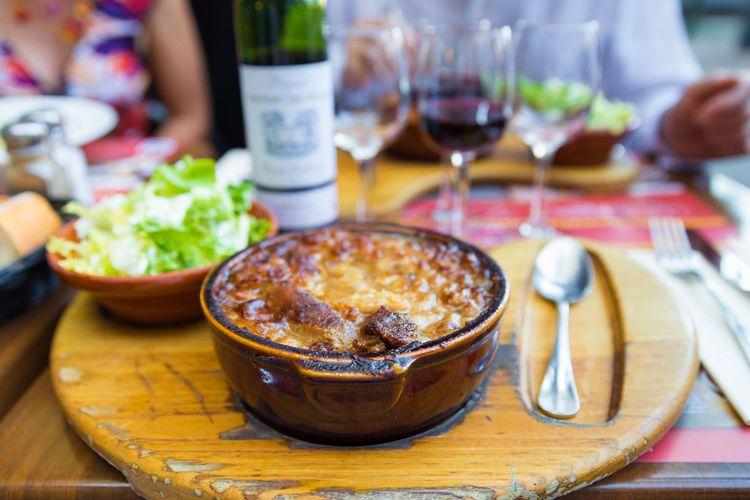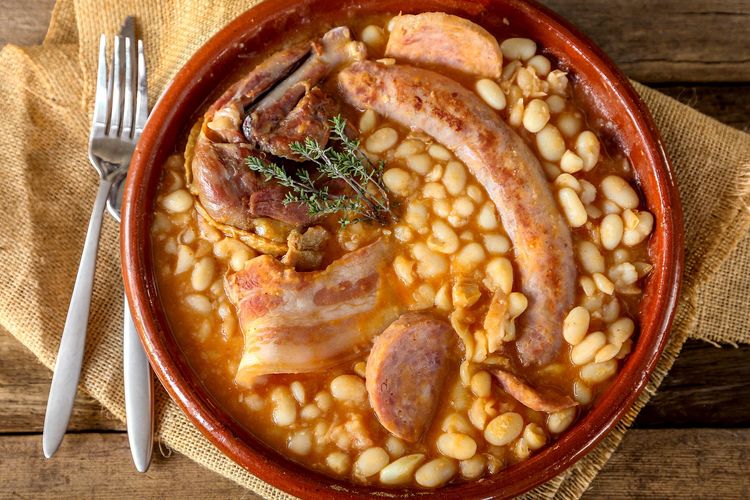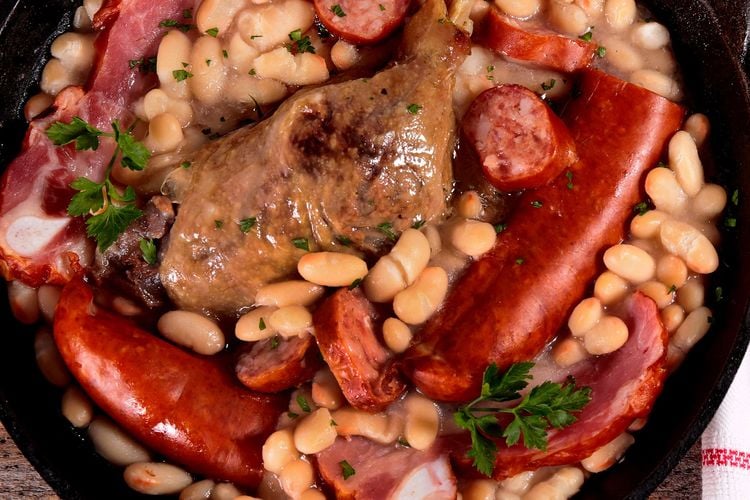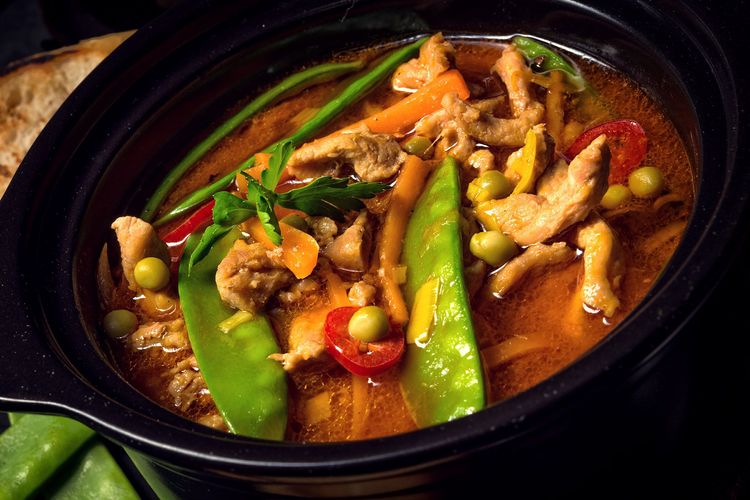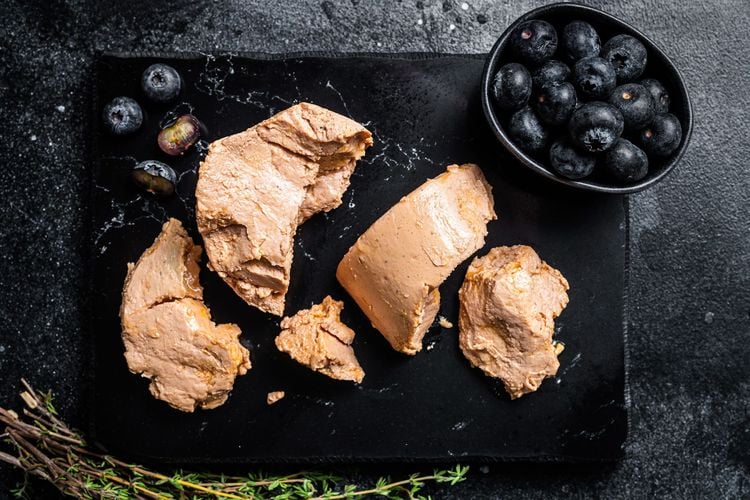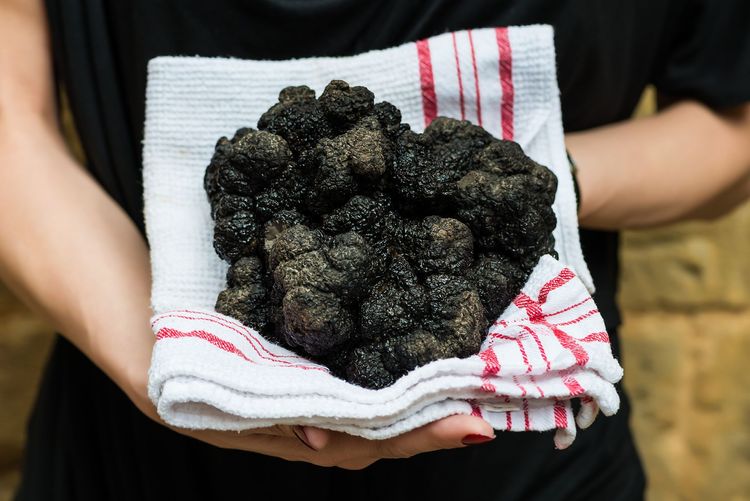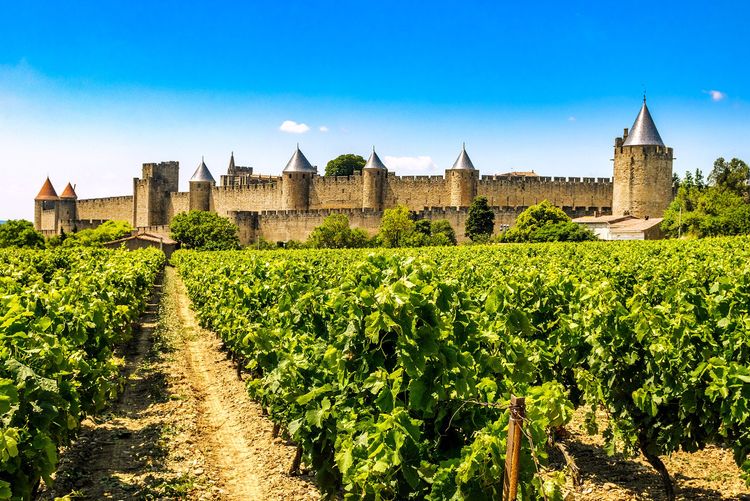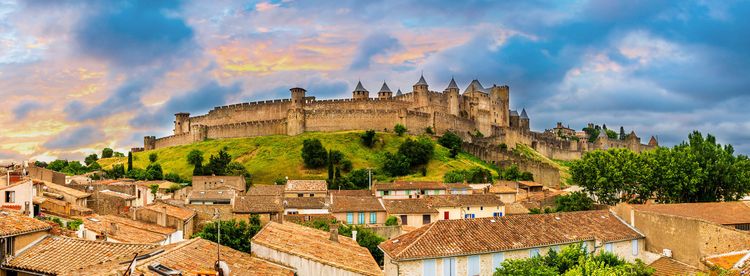Here, although it is no more and no less than a variation on the Castelnaudary cassoulet, the Carcassonne cassoulet is an institution. This family dish is prepared at home, in a Castelnaudary terracotta casserole dish in which lingots - or mogettes du Lauragais - generous white beans reminiscent of coconuts, pork (shoulder, shank, loin, sausage, ham), leg of mutton and red partridge meat, the local signature, are simmered when in season, on a generous bed of lard or bacon rind. And on top, some fine Toulouse sausages.
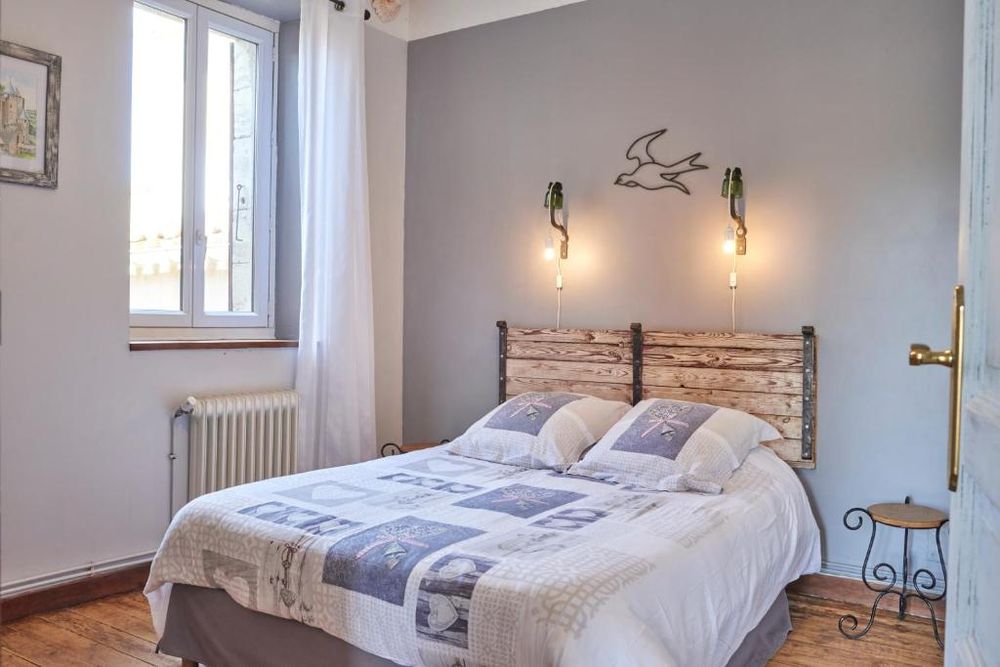 Carcassonne
Carcassonne
